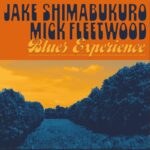Every once in a while, something special arrives over the transom without notice, without much fanfare and without the extensive promotion of major record labels. Such was the 2012 release from Ciro Hurtado, entitled Los Angeles Blues, a recording of solo guitar music that is exceptionally beautiful not only for its range of composition, but also for the superlative quality of the recording process.
This is one of the most natural-sounding albums of many a year, delivering a listening experience that may well stop you dead in your busy tracks and remind you that the creation and playing of music is above all an ineffable art form unlike any other. Stravinsky famously said that music is powerless to express anything at all. Of course he was being ironic, as this new album proves once and for all. In fact, music expresses everything including the inexpressible, reaching as it does the depths of our souls and our minds. Over the transom, unannounced, modestly promoted, Los Angeles Blues is as brilliant and as satisfying as any recording we have auditioned in several years.
Ciro Hurtado is a guitar virtuoso with a unique Latin style that he calls “Andean Blues”, incorporating as he does elements of South America, world rhythms and classical technique. Born in a small town in the Amazonian rain forest he went to school in the Peruvian capital of Lima. He began playing guitar at the age of nine, and took up serious studies four years later. For some years now he has lived in the U.S., playing with various guitar ensembles, composing film and documentary music, and absorbing influences from his travels around the world. He has listened to guitarists such as Pierre Bensusan, Tommy Emmanuel, Lawrence Juber, Michael Hedges and Andrew York. Ciro has commented on those auditions, saying “They don’t influence me because I have a different style, but they certainly inspire me and give me confidence to try new things”. Ciro has also long been a fan of both American and British rock music, which has led to concise and memorable melodies in his own work.
He has also listened closely to the Afro-Peruvian release called The Soul of Black Peru, directed by David Byrne of Talking Heads, ‘because I heard that music played in the streets of Peru when I was young.” The music he writes, though, is strictly of his own creation, without regard to current music trends. Therein lies both its value and its integrity: the purity of the artist’s tone is complemented by Hurtado’s obvious integrity. Many world musicians these days are tempted by showy bravura pieces designed to manipulate the emotions of the audience. Such recordings quickly arouse and then deflate the listener. In Hurtado’s playing, however, I hear the elegant restraint of Julian Bream, the precise yet passionate intensity of Alirio Diaz, and the formidable intelligence that characterized the performances of John Williams in his reference recordings of Bach’s Four Lute Suites. In short, we have a master at work in Los Angeles Blues, resulting in a recording that will stand the test of time.
There are several Must Have tracks on the record including the title piece, about which Hurtado has said “When I started learning how to play the guitar I got a lot of help from my relatives. Most of them already knew how to play the Andean guitar, in particular the Yaravi, which is a sad, melancholic style of music from the Peruvian highlands… At the time I was learning to play Andean folk music, there was an explosion of British Rock and Roll over the airwaves in Peru… In this composition I express my deep affection for the American Blues and Andean folk music in a style of my own, which I call Andean Blues.” Other highlights include “La Campanera”, based on a ’60s Spanish hit, and “Bordon Triste”, with its contrapuntal baseline and 6/8 dance rhythms.
His previous Guitarrista was named one of the Top 5 best world music albums of the year by the radio programmers of the International Zone Music Reporters. Los Angeles Blues reached that same exalted position.
One final note: Ciro Hurtado plays a guitar made by the world-famous luthier, Teodoro Pérez, who apprenticed with José Ramirez III in Madrid. The sound of a Pérez guitar is luscious, warm and spacious, and as mentioned, the superb engineering of this recording is a marvel.
Highly recommended.



